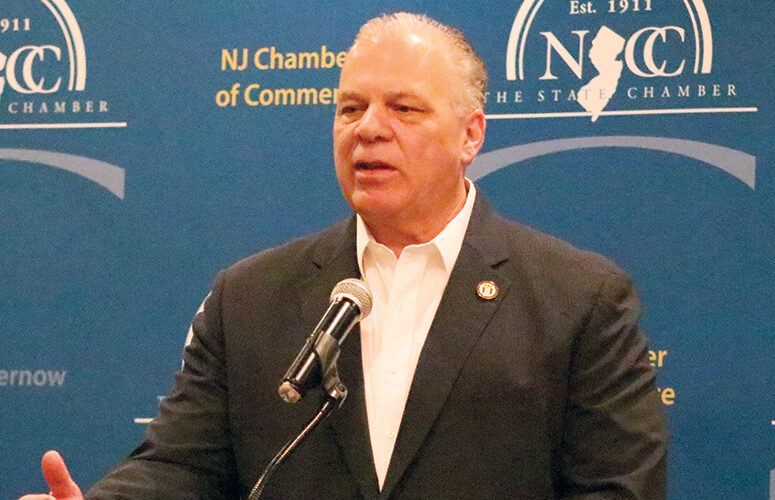
The Employee Benefits Balancing Act
Keeping workers happy with various benefits is important, but they must not hurt the bottom line.
By Lisa Goulian Twiste, Contributing Writer On Jun 5, 2017One of the most important and challenging aspects of starting a business is coming up with the right employee benefits package – one that will keep costs in line while also helping the company attract the best possible pool of employees.
This package can include many different types of benefits. There are government mandated benefits like Social Security and Medicare, and as a result of the Affordable Care Act (ACA), employers with 50 or more full-time equivalent (FTE) employees now have to provide health coverage to those employees or else pay a tax penalty. Then there’s the long list of optional benefits a company can offer, such as a retirement savings plan [perhaps a 401(k)], long-term disability, life insurance, tuition reimbursement, a wellness program, or childcare assistance. Companies can use these benefits to attract – and retain – good employees, but they often need to make tough choices as expenses continue to skyrocket.
“The cost of employee benefits has grown dramatically in the last 10 years. We see that many companies cannot continue to provide benefits that may have been viewed as a must in the past, and many companies have also compromised on the cost sharing with their employees,” says Timothy Desmond, partner, director of employee benefit Services at PKF O’Connor Davies of Cranford. “Regarding healthcare insurance, most employers have to charge their employees a portion of the premiums just to stay within their own budgetary means.”
Deciding what types of benefits to offer can be a long and painstaking process, as the business owner or owners try to balance what they want versus what they can afford as well as what benefits are being given out versus the revenue an employee is bringing in. When it’s a service business like plumbing or accounting, the owner can measure hours worked against money brought into the company. In a large retail setting, however, this cost/benefit ratio can be more difficult to quantify.
“One way or another, it’s going to cost the employer something,” says Michael H. Karu, CPA/CFF, member, Levine, Jacobs & Company, LLC, of Livingston. “The owners of the company have to recognize what the cost of benefits will be as well as what’s in it for them, such as, ‘If I have a successful business and put out a retirement plan, I’m going to benefit, too.’”
Many companies hire a human resources director or benefits administrator to help navigate the process. They may also consult an accountant or other expert to evaluate their options and how each decision will affect the financial health of the company. In the end, the owner or owners will almost always have the final say because the funds are coming out of their pocket.
“You have to look at the benefits package as a whole, since most businesses will have to make sacrifices,” Desmond says. “If you offer more vacation time to your employees than your competitors, you will probably have to cut back on something else, perhaps salary. As with most things in the life of a small business owner, they must understand what is important to their employees and then research the best way to obtain a good deal.”
Health Benefits
Experts agree that health insurance is the most difficult benefit to choose and implement, as it is the most expensive and most complicated. Regulations brought forth under the ACA – and pending changes to it or possible repeal of the law – have made it increasingly challenging for benefits administrators to understand current options, and to convey to employees what they’re getting for their money. In fact, healthcare is probably the No. 1 worry of most employees, and small businesses are having a hard time dealing with the complexity and technical compliance aspects of implementation.
“There are many options available, and finding a plan that suits the employer’s cost profile and provides reasonable coverage to the employees is a very difficult task,” says Toni Klimowicz, CPA, a partner with Bederson Company of Fairfield. “Also, while requesting the employees to contribute is common now – as opposed to years ago when employers paid for complete coverage – it can still be daunting.”
Some of the healthcare burden can be alleviated through a Section 125 or cafeteria plan that allows employees to withhold a portion of their pretax salary to pay for healthcare expenses. The advantage to both employer and employee is that these types of benefits can be passed to the employee without any payroll taxes being paid. “That benefit can add up to real savings for a small business,” Desmond says.
In addition to healthcare, many companies offer a retirement plan, whether it’s a simple 401(k) with a small company match, or a Simplified Employee Pension Plan (SEP), where only the company is contributing. Klimowicz emphasizes the importance of consulting with a specialist in both the health insurance and retirement plan fields before making any decisions in these areas, saying, “There are many regulations that must be complied with in order for the specific plan to meet governmental requirements. There are annual compliance procedures as well. It is a continual, ongoing process that must be administered and maintained, and carries costs in the future as well as the initial implementation costs.”
The Growth of Lifestyle Benefits
In addition to required and traditional benefits, employers can also offer non-traditional or “quality of life” benefits that have little or no monetary value, but might be just as appealing to prospective employees. These can include telecommuting, flex time, additional vacation days, company outings, or even perks like an in-office gym or café. The importance of these benefits will probably be determined by the general age and income level of the employee population, Klimowicz points out, adding that a group of millennials are more likely to look for flex time, ability to work from home, and vacation time, while a lower income workforce might prefer better healthcare.
Either way, Karu says, the days of telling employees they must work nine to five are all but gone. “Sure, there are companies that still do it, but someone who is highly skilled – whether a plumber or an attorney – is looking for those lifestyle benefits,” he says. “A woman who is a professional and has a second or third child may say she can’t be at the office at 9 a.m. Or, a dad who is helping with childcare might say, ‘I can’t work from nine to five, but I can work from 10 to 6.’ Someone who needs that flexibility may be willing to take less salary for a job more in tune with his or her lifestyle.”
Desmond agrees that to be successful in today’s marketplace, a company should be open to these non-conventional work arrangements. “Traditional nine-to-five Monday to Friday is now up for reconsideration,” he says. “Being flexible seems to be a great way to attract those people who need the flexibility in their lives to handle their personal commitments, and still allow them to be productive and valuable employees.”
Some companies offer a shortened work week where employees work their 40 hours from Monday to Thursday and have Friday off. Others allow employees to work from home certain days of the week, or choose their own hours to work – as long as they are putting in eight hours a day. In addition, some business owners offer a combination of vacation and sick days under a Paid Time Off (PTO) policy.
“These all require a certain amount of employer and employee trust and communication skills in order for the business to continue to run seamlessly,” Klimowicz says. “Companies need to stay competitive, and the workforce is often one of their biggest assets to do so. Employees who truly like their jobs are more efficient and productive, and that trickles up to the employer on every level.”
Put ‘Some Teeth’ into Benefits with Dental Insurance
As companies decide what benefits to offer their employees, dental care can often be the forgotten stepchild. However, underestimating the importance of dental benefits is a mistake many businesses can’t afford to make, says Steve Fleischer, chief sales officer, vice president, sales & account management, at Delta Dental New Jersey.
“Dental is very important to attract and retain good employees and should be considered an important component of any benefits package,” Fleischer says. “Regular checkups and good home care provide a lot of good benefits for overall health and productivity.”
The likelihood of providing dental benefits can often be tied to the size of the company, according to Fleischer. Larger business are more likely to offer dental benefits, while small companies are beginning to incorporate them more often. Those companies that do include a dental plan in their benefits package can offer a PPO plan that allows members to visit either a network or non-network provider, or a Dental HMO plan that is lower in cost, but tends to have a limited network. Many large employers tend to offer both options in their package, while smaller companies typically offer only the PPO type of program.
“What we try to do is express how important utilizing network providers are: The more access members have, the more likely they are to utilize their benefits,” Fleisher says. “Preventative care is important because if you’re taking good care of your mouth and gums, you’re probably less likely to have extended treatments, which can also impact work productivity. Ultimately, don’t overlook the value of dental benefits. It’s worth the investment in your employees.”
Related Articles:






